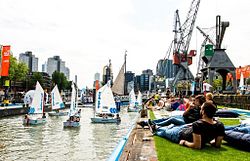
Hellevoetsluis is a small city in the western Netherlands. It is located in Voorne-Putten, South Holland. The former municipality covered an area of 61.20 km2 (23.63 sq mi) of which 20.10 km2 (7.76 sq mi) was water and it included the population centres of Nieuw-Helvoet, Nieuwenhoorn, and Oude en Nieuwe Struiten, all former municipalities.

Teylers Museum is an art, natural history, and science museum in Haarlem, Netherlands. Established in 1778, Teylers Museum was founded as a centre for contemporary art and science. The historic centre of the museum is the neoclassical Oval Room (1784), which was built behind the house of Pieter Teyler van der Hulst (1702–1778), the so-called Fundatiehuis. Pieter Teyler was a wealthy cloth merchant and banker of Scottish descent, who bequeathed his fortune for the advancement of religion, art, and science. He was a Mennonite and follower of the Scottish Enlightenment.

The Bristol Industrial Museum was a museum in Bristol, England, located on Prince's Wharf beside the Floating Harbour and which closed in 2006. On display were items from Bristol's industrial past – including aviation, car and bus manufacture, and printing – and exhibits documenting Bristol's maritime history. The museum was managed by Bristol City Council along with nearby preserved industrial relics along Prince's Wharf, including the Bristol Harbour Railway, cranes and a small fleet of preserved vessels. The railway, cranes and vessels all now form part of the working exhibits at M Shed Museum.

HNLMSBuffel is a 19th-century ironclad ram ship. She was one of the main attractions of the Maritime Museum Rotterdam, also known as the Prince Hendrik Museum, named after its founder, Prince Henry (Hendrik) "The Navigator", who had a naval career and established the basis of the museum back in 1874. In October 2013 the ship moved to Hellevoetsluis and is again open for public.
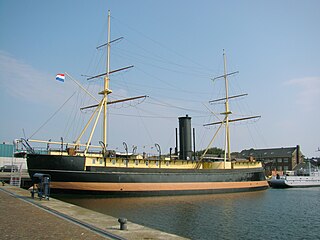
HNLMS Schorpioen is a Schorpioen-class monitor built in France for the Royal Netherlands Navy in the 1860s. These new ships were equipped with heavy rifled 23 cm (9 in) guns, and a heavy armor. The hull had an armor plated belt of 15 cm (6 in) and the gun turret, housing the two guns, had almost 30 cm (12 in) of armor.

The Australian National Maritime Museum (ANMM) is a federally operated maritime museum in Darling Harbour, Sydney. After considering the idea of establishing a maritime museum, the federal government announced that a national maritime museum would be constructed at Darling Harbour, tied into the New South Wales state government's redevelopment of the area for the Australian bicentenary in 1988. The museum building was designed by Philip Cox, and although an opening date of 1988 was initially set, construction delays, cost overruns, and disagreements between the state and federal governments over funding responsibility pushed the opening to 1991.
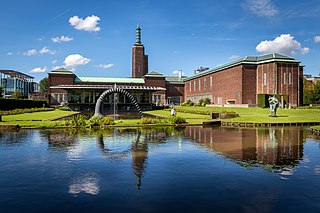
Municipal Museum Boijmans Van Beuningen is an art museum in Rotterdam in the Netherlands. The name of the museum is derived from the two most important collectors of Frans Jacob Otto Boijmans and Daniël George van Beuningen. It is located at the Museumpark in the district Rotterdam Centrum, close to the Kunsthal and the Natural History Museum.

HNLMSBonaire is a Samarang-class gunvessel of the Royal Netherlands Navy, now under restoration as a museum ship.

The Port of Rotterdam is the largest seaport in Europe, and the world's largest seaport outside of East Asia, located in and near the city of Rotterdam, in the province of South Holland in the Netherlands. From 1962 until 2004, it was the world's busiest port by annual cargo tonnage. It was overtaken first in 2004 by the port of Singapore, and since then by Shanghai and other very large Chinese seaports. In 2020, Rotterdam was the world's tenth-largest container port in terms of twenty-foot equivalent units (TEU) handled. In 2017, Rotterdam was also the world's tenth-largest cargo port in terms of annual cargo tonnage.

The New Zealand Maritime Museum Hui Te Ananui A Tangaroa is a maritime museum in Auckland, New Zealand. It is located on Hobson Wharf, adjacent to the Viaduct Harbour in central Auckland. It houses exhibitions spanning New Zealand's maritime history, from the first Polynesian explorers and settlers to modern day triumphs at the America's Cup. Its Maori name is 'Te Huiteanaui-A-Tangaroa' – holder of the treasures of Tangaroa.

The National Maritime Museum, Cornwall is located in a harbourside building at Falmouth in Cornwall, England. The building was designed by architect M. J. Long, following an architectural design competition managed by RIBA Competitions.

The Netherlands Architecture Institute (NAI) was a cultural institute for architecture and urban development, which comprised a museum, an archive plus library and a platform for lectures and debates. The NAI was established in 1988 and was based in Rotterdam since 1993. It ceased to exist in 2013, when it became part of Het Nieuwe Instituut.
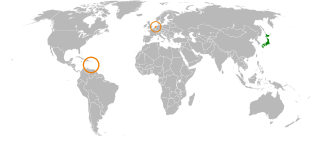
Japan–Netherlands relations are the bilateral relations between Japan and the Netherlands. Relations between Japan and the Netherlands date back to 1609, when the first formal trade relations were established.
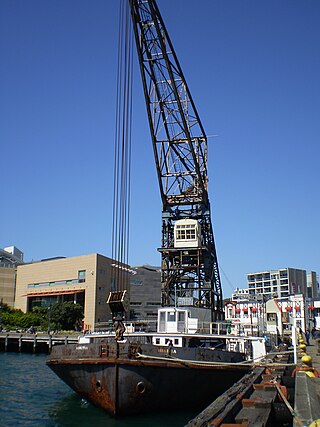
Hikitia is a working self-propelled floating steam crane in Wellington Harbour, New Zealand. She is thought to be the only working steam crane of her type in the world.

ST Cervia was built in 1946 as a seagoing tug for use as a fleet auxiliary by Alexandra Hall & Company Ltd of Aberdeen, Scotland. Today she is a floating Museum still undergoing restoration in Ramsgate, Kent.
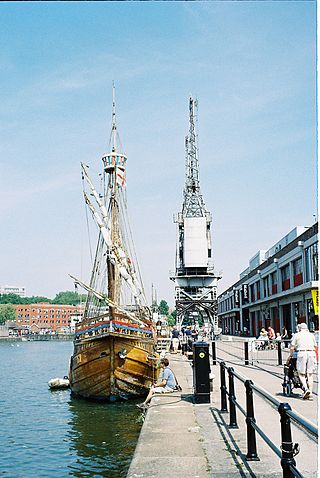
M Shed is a museum in Bristol, England, located on Prince's Wharf beside the Floating Harbour in a dockside transit shed formerly occupied by Bristol Industrial Museum. The museum's name is derived from the way that the port identified each of its sheds. M Shed is home to displays of 3,000 artefacts and stories, showing Bristol's role in the slave trade and items on transport, people, and the arts. Admission is free.
SS Binnendijk was a Holland America Line (NASM) cargo steamship. She was one of NASM's "B" class ships: the company's first cargo ships to be powered by steam turbines. Binnendijk was built in South Holland in 1921, and sunk by a mine in the English Channel in 1939. She was the first ship that NASM lost in the Second World War. Her wreck off the coast of Dorset, England is now a wreck diving site, nicknamed "The Benny".

The Buffel-class monitors were a pair of ironclad monitors built for the Royal Netherlands Navy in the 1860s. They had uneventful careers and were stricken from the Navy List in the late 1890s. Guinea was scrapped in 1897, but Buffel was hulked and converted into an accommodation ship in 1896. She was captured by the Germans during World War II, but survived the war. She became a museum ship in 1979.

The South Australian Maritime Museum is a state government museum, part of the History Trust of South Australia. The museum opened in 1986 in a collection of historic buildings in the heart of Port Adelaide, South Australia's first heritage precinct.

The National Maritime Museum in Gdańsk is a maritime museum in Gdańsk, Poland, established on 1 January 1962. It is dedicated to gathering, researching and preserving artifacts and documents concerning ship transport, international trade, fishing and culture of people working at sea, rivers and those ashore as well as the dissemination of knowledge on maritime history of Poland and its economy through the ages.
